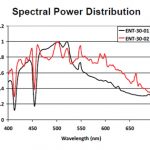Crew Chief: “What’s this note on your plot about a 500-foot snake?”
LD: “Well…I think I need a 500-foot snake. Oh, and it needs to have at least eight DMX lines.”
Crew Chief: “We don’t have one. Can you make a 400 work?”
LD: “Did you look at the plot?”
Crew Chief: “Mmmm. Yeah. Okay, we’ll send out the fiber snake.”
LD: “???”
Crew Chief: “It’s no big deal. Don’t worry about it.”
Knowing Your Limitations
This is a simplified version of a conversation I recently had with someone at Upstaging Inc., a company I work with frequently on corporate events. With FOH stuck at the back of a gigantic Vegas ballroom and a snake run that had to go all the way around — not through — the room, I suddenly found myself very pleased to have a lighting provider that specialized in fixing these types of problems.
The original system I specified included two console universes for conventional and automated lighting, as well as a third console universe running a Catalyst media server at FOH. Five universes of ArtNet from the media server (for the pixel-mapped LEDs) would then be converted to DMX512 and run across the snake with the automated and conventional universes.
So — you may be asking — what’s the big deal?
While DMX512 can actually run 1,000 feet, bundling eight DMX512 cables and running them 500 feet isn’t the most elegant solution. And don’t even think about using an audio snake, because it doesn’t conform to high-speed digital data transmission specs.
We might have considered using a single-shielded twisted-pair Cat5 cable, except the maximum allowable run is only 300 feet. The solution in this case was to use two very small strands of fiber optic cable and a few pieces of important electronics. Here’s how it works…
Building a Network
A fiber-optic snake, in this case, actually refers to much more than just a data run from FOH to dimmer beach. What we actually built is a fairly simple Ethernet network or LAN (Local Area Network).
The core of the system comprised two high-speed unmanaged Ethernet switches. Much like a low-cost network hub, an Ethernet switch allows various network devices (like computers) to share data over a network. Each switch — one at dimmer beach and one at FOH — has a specialized fiber-optic connection used to connect it to an additional switch over long distances. Two pieces (or strands) of fiber are used to make a two-way data link.
Note: While switches like these could be connected just as easily using a lengthy Cat5 cable, it would require another piece of gear to comply with the maximum 300-foot run rule. For a 500-foot cable run, you would have to insert another network switch near the middle of the run to guarantee the integrity of the communications.
Of course, having a data network in place doesn’t help us much if I can’t plug a 5-pin DMX line into the switch…
Data Conversion
My original plans for FOH called for a couple of Martin Ether2DMX boxes to handle the conversion of the media server outputs from ArtNet to DMX512. Each Ether2DMX can transmit and receive ArtNet protocol over an Ethernet connection and supports four inputs, plus four outputs, of DMX512 on standard 5-pin XLR connectors.
As it turned out, I ended up using one box at FOH to get the additional universes from the console converted to ArtNet, while the media server was connected directly to the switch via its network jack. Now that I had these seven universes of ArtNet hooked together at the switch, all that data was also available at the dimmer beach switch thanks to the fiber optic “snake” running around the room.
Another pair of Ether2DMX boxes was connected at dimmer beach, this time taking advantage of their DMX512 outputs to turn all of our data back into fixture-friendly DMX512.
Odds and Ends
While this covers the basics of a fiber snake, there are a few pitfalls to watch out for.
- While a degree in computer networking is not required, a decent background in it is very useful. Network settings are crucial to a happy and reliable network.
- ArtNet has a theoretical limit of 255 universes, but a practical limit of 40 universes. If you’re planning to use more than 30 universes on one connection, be sure to talk to an expert.
- All Ethernet-based networking technologies can theoretically coexist with one another on the same network. That doesn’t make it a good idea. If your console (or other device) makes use of a network connection that is not ArtNet, I highly recommend that you use physically separate networks whenever possible.
Although the set-up of the network requires some additional time, I was most impressed by the flexibility that I had once it was up and running. In this case, a networked solution was a huge boon to our infrastructure and therefore to our show.
In the not-too-distant future, networks on show sites will be as common as Hollywood celebrities in rehab. If you aren’t yet on a first-name basis with networking, it’s a good idea to get acquainted.
(Special thanks go out to everyone at Upstaging who supported this project and to my fearless crew chiefs Mike Green and Glen Claytor.)
Phil Gilbert is a freelance lighting designer and programmer. You can contact (or correct) him at pgilbert@ plsn.com.
